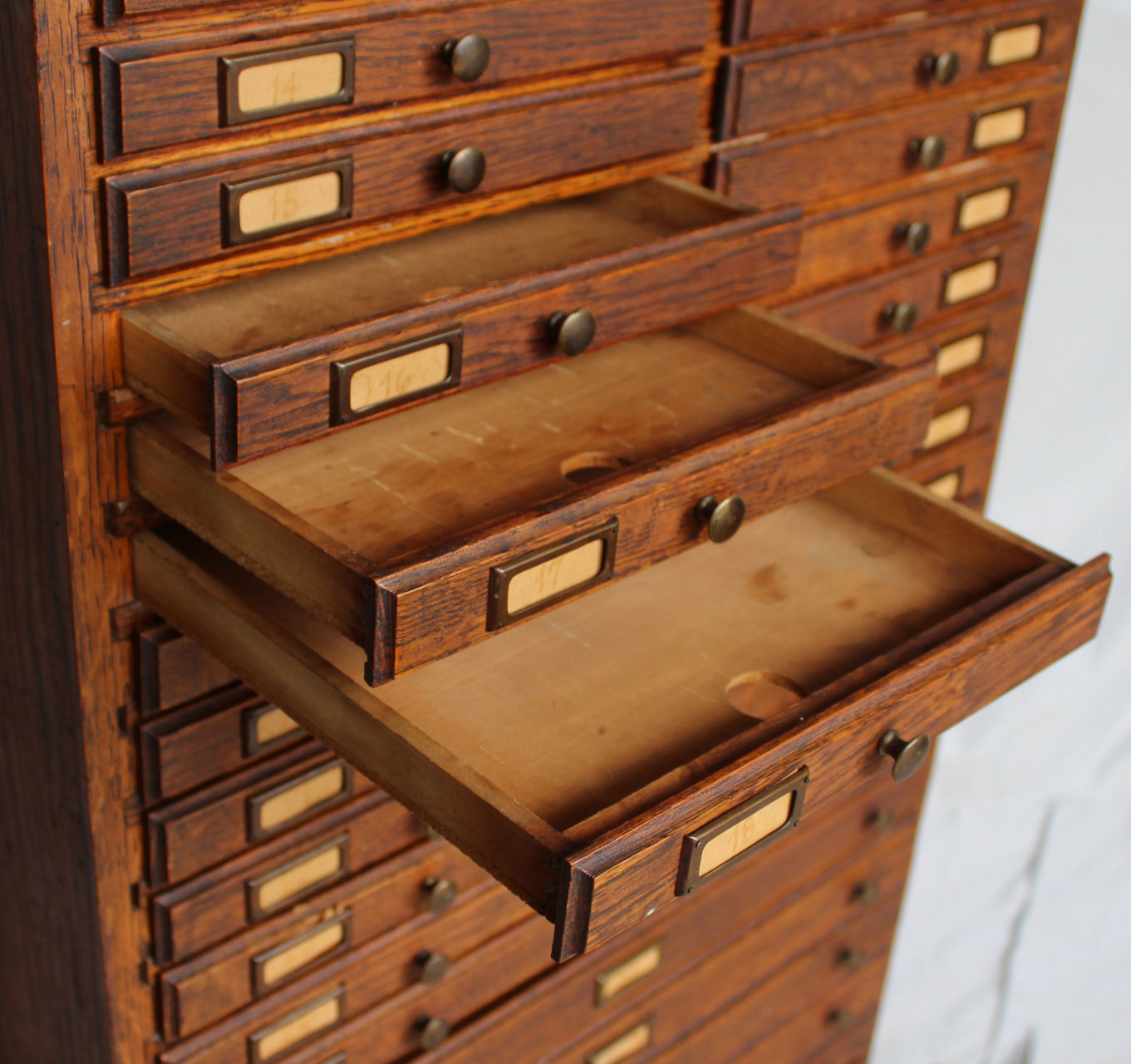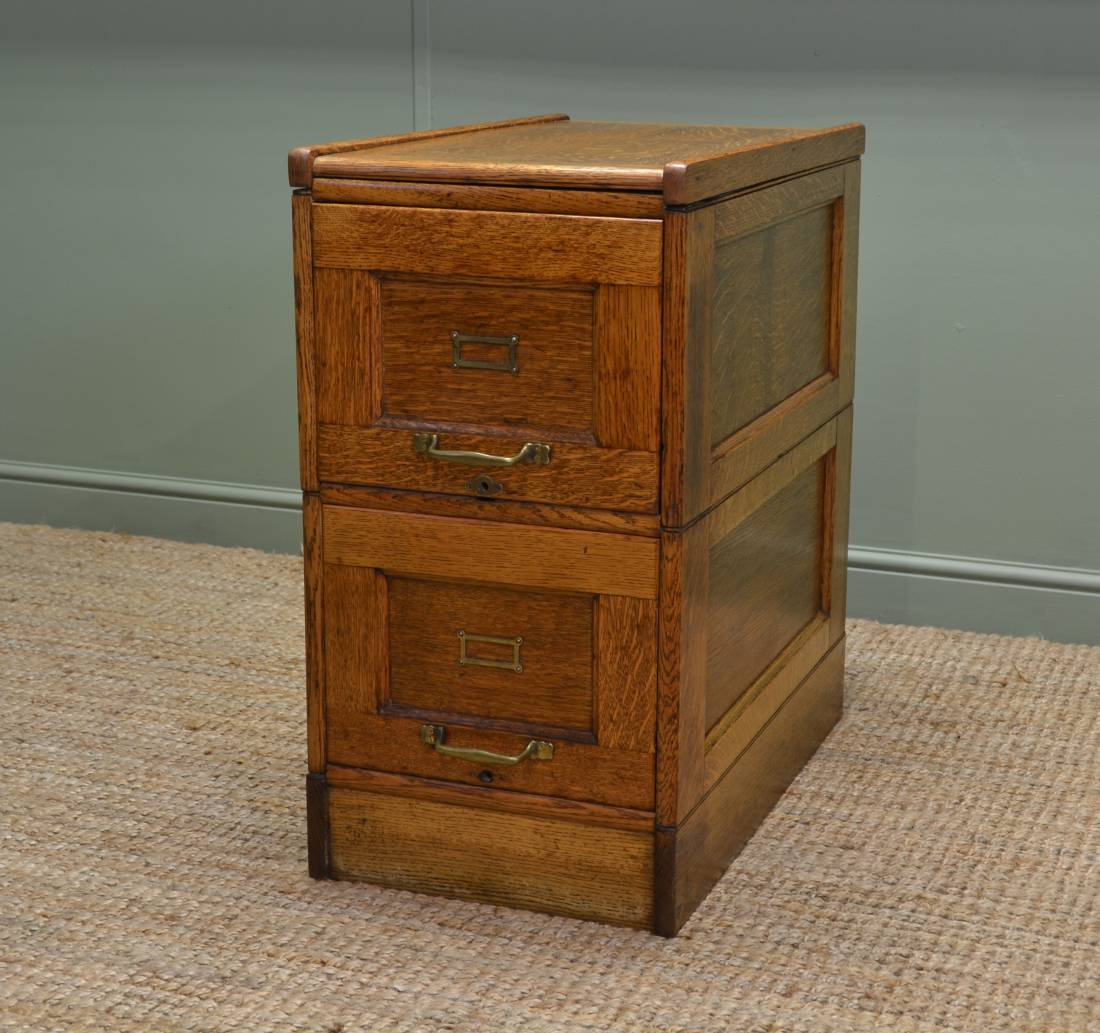History and Evolution of Wooden Filing Cabinets

The humble wooden filing cabinet, a staple of offices and homes for over a century, has a fascinating history that reflects the evolution of information management and design aesthetics. From its early, utilitarian origins to the elegant and functional pieces we see today, the wooden filing cabinet has played a vital role in shaping how we organize and store our documents.
Early Origins and Evolution
The concept of filing systems predates the invention of the filing cabinet. In the 19th century, businesses and individuals used various methods to organize documents, including simple boxes, drawers, and even pigeonholes. The development of the modern filing cabinet can be traced back to the late 19th century, when the need for more efficient and organized document storage became increasingly apparent. The invention of the typewriter and the growing volume of business correspondence further fueled this need.
- Early Filing Cabinets: The earliest filing cabinets were often made of metal or wood and featured simple designs with drawers that slid out on runners. These early cabinets were typically large and cumbersome, often occupying entire rooms.
- The Introduction of Wood: Wood became a popular material for filing cabinets in the early 20th century. Its durability, natural beauty, and versatility made it an ideal choice for creating functional and aesthetically pleasing storage solutions.
- Evolution of Design: As the 20th century progressed, filing cabinet designs evolved to meet the changing needs of businesses and individuals. Cabinets became more compact, with features such as adjustable shelves, hanging folders, and locking mechanisms. The introduction of the lateral filing system, which allowed for easy access to files from both sides, further revolutionized the way documents were stored.
Notable Manufacturers and Designers
A number of prominent manufacturers and designers played a significant role in the development and popularization of vintage wooden filing cabinets. Their innovations in materials, design, and functionality helped shape the evolution of this iconic piece of furniture.
- Herman Miller: This American furniture manufacturer, known for its innovative designs, produced a range of wooden filing cabinets in the mid-20th century. Their cabinets often featured clean lines, simple forms, and a focus on functionality.
- Eames Office: The iconic design duo, Charles and Ray Eames, also designed several notable wooden filing cabinets. Their designs were characterized by their minimalist aesthetic and focus on ergonomic principles.
- Knoll: Another leading American furniture manufacturer, Knoll, produced a variety of wooden filing cabinets that were both stylish and practical. Their cabinets often featured bold colors, unique materials, and innovative design elements.
Historical Context and Cultural Influences
The design and functionality of vintage wooden filing cabinets were also influenced by the historical context and cultural trends of the time. The Art Deco movement, with its emphasis on geometric patterns, bold colors, and luxurious materials, had a significant impact on the design of filing cabinets in the 1920s and 1930s. The rise of modernism in the mid-20th century led to the development of more streamlined and functional designs, with a focus on simplicity and efficiency.
Styles and Designs of Vintage Wooden Filing Cabinets

Vintage wooden filing cabinets are not just functional storage solutions but also captivating pieces of furniture that reflect the design trends of their era. Their styles and designs are a testament to the craftsmanship and artistry of the past, offering a glimpse into the aesthetics and values of different periods.
Art Deco Filing Cabinets, Vintage wooden filing cabinet
Art Deco filing cabinets, popular during the 1920s and 1930s, exude a sense of glamour and sophistication. Their designs are characterized by geometric patterns, bold colors, and luxurious materials.
- Geometric Motifs: Art Deco filing cabinets often feature geometric patterns like chevrons, sunbursts, and stylized floral designs. These motifs are often incorporated into the cabinet’s hardware, such as handles and pulls.
- Bold Colors: Art Deco designs embraced vibrant colors, including black, gold, silver, and deep reds. These colors were often used in combination with contrasting materials, such as wood and metal, to create a visually striking effect.
- Luxurious Materials: Art Deco filing cabinets were often made from high-quality materials, such as mahogany, walnut, and brass. The use of these materials contributed to the cabinets’ luxurious appearance and durability.
The Art Deco style was characterized by its emphasis on geometric shapes, bold colors, and luxurious materials. This approach was reflected in the design of filing cabinets, which often featured sleek lines, intricate details, and a sense of opulence. These cabinets were not only functional but also served as decorative elements, adding a touch of elegance to offices and homes.
Mid-Century Modern Filing Cabinets
Mid-Century Modern filing cabinets, popular from the 1950s to the 1960s, embodied the spirit of modernism, characterized by clean lines, functionality, and simplicity.
- Clean Lines and Simplicity: Mid-Century Modern filing cabinets were designed with a focus on functionality and minimalism. They featured clean lines, simple shapes, and a lack of unnecessary ornamentation.
- Natural Materials: Mid-Century Modern designs favored natural materials, such as wood, leather, and metal. These materials were often used in their natural state, showcasing their inherent beauty and texture.
- Innovative Design: Mid-Century Modern filing cabinets often incorporated innovative design elements, such as tapered legs, cantilevered shelves, and sliding doors. These features contributed to the cabinets’ functionality and visual appeal.
Mid-Century Modern filing cabinets were designed for both functionality and aesthetic appeal. They offered a practical solution for storage while also complementing the modern interiors of the time. The use of natural materials, clean lines, and innovative design elements made these cabinets both stylish and functional.
Victorian Filing Cabinets
Victorian filing cabinets, popular during the Victorian era (1837-1901), were characterized by their ornate details, intricate carvings, and heavy construction.
- Intricate Carvings: Victorian filing cabinets were often adorned with elaborate carvings, featuring floral motifs, scrollwork, and other decorative elements. These carvings were often hand-crafted, adding a unique and personalized touch to each cabinet.
- Dark Wood Finishes: Victorian filing cabinets were typically made from dark wood, such as mahogany, walnut, or rosewood. These woods were often finished with a high gloss, enhancing their rich color and intricate details.
- Heavy Construction: Victorian filing cabinets were built to last. They were often constructed with solid wood and heavy-duty hardware, ensuring their durability and longevity.
Victorian filing cabinets were a testament to the craftsmanship and artistry of the era. Their ornate details and heavy construction reflected the Victorian values of tradition, craftsmanship, and enduring quality. These cabinets were not just functional storage solutions but also decorative pieces that added a touch of grandeur to any space.
Materials and Construction of Vintage Wooden Filing Cabinets

Vintage wooden filing cabinets are not just functional pieces of furniture; they are testaments to the craftsmanship and artistry of bygone eras. The materials and construction techniques used in their creation are a reflection of the values and aesthetics of the time.
Types of Wood
The choice of wood for a vintage filing cabinet was influenced by its availability, cost, and suitability for the intended purpose. Here are some of the most commonly used woods:
- Oak: Known for its strength, durability, and attractive grain pattern, oak was a popular choice for filing cabinets. Its resistance to wear and tear made it ideal for heavy-duty use.
- Mahogany: Renowned for its rich reddish-brown color and beautiful grain, mahogany was often used in high-end filing cabinets. Its luxurious appearance and durability made it a favorite among businesses and institutions.
- Pine: A softer wood, pine was often used for less expensive filing cabinets. While not as durable as oak or mahogany, pine was still a good choice for lighter-duty applications.
- Walnut: Valued for its dark brown color and distinctive grain, walnut was used in some vintage filing cabinets. Its strength and beauty made it a popular choice for furniture.
- Cherry: This wood, with its reddish-brown hue and attractive grain, was also employed in some vintage filing cabinets. Its durability and aesthetic appeal made it a sought-after material.
Construction Techniques
Vintage wooden filing cabinets were constructed using traditional joinery methods, which ensured both strength and durability. These techniques included:
- Mortise and Tenon: This time-honored joinery method involves cutting a rectangular hole (mortise) in one piece of wood and a corresponding projection (tenon) on another. The tenon fits snugly into the mortise, creating a strong and secure joint.
- Dovetail Joints: Dovetail joints, characterized by their interlocking, wedge-shaped pieces, were used for drawer fronts and other critical components. They provided exceptional strength and prevented the joints from pulling apart under stress.
- Dado Joints: Dado joints are created by cutting a groove (dado) in one piece of wood and fitting a corresponding tongue on another. This method was often used for assembling cabinet sides and shelves.
Hardware and Finishes
The hardware and finishes used on vintage wooden filing cabinets were a reflection of the prevailing styles and technologies of the time.
- Handles: Handles were typically made of metal, often brass or bronze. They could be simple and functional or elaborate and decorative, depending on the cabinet’s style and era.
- Hinges: Hinges were usually made of brass or iron and were often concealed within the cabinet’s construction. They allowed the doors to open and close smoothly and securely.
- Drawer Slides: Drawer slides were typically made of wood or metal. Wooden slides were often made of maple or birch and were often oiled to reduce friction. Metal slides were often made of brass or steel and provided smoother and more durable operation.
- Finishes: Vintage wooden filing cabinets were often finished with a variety of techniques, including:
- Varnish: Varnish provided a protective layer that enhanced the wood’s natural beauty and color.
- Lacquer: Lacquer offered a durable and glossy finish that was often used on high-end cabinets.
- Paint: Some vintage filing cabinets were painted, often in dark colors such as black, brown, or green. This provided a more utilitarian and less ornate look.
A vintage wooden filing cabinet, with its worn patina and sturdy construction, can serve as a unique and functional piece in a variety of settings. Its rustic charm can complement the bold and quirky aesthetic of a black, white, and mauve bedroom , adding a touch of vintage elegance to the space.
The cabinet’s drawers provide ample storage for personal items, while its solid wood frame adds a sense of stability and longevity to the room.
Vintage wooden filing cabinets, with their sturdy construction and timeless appeal, can add a touch of industrial chic to any room. Their functionality is undeniable, offering a practical solution for organizing documents and keeping clutter at bay. When incorporating such a cabinet into a red and white master bedroom , consider painting it in a complementary shade of red or white to create a cohesive aesthetic.
The contrasting textures and colors can add depth and visual interest to the space, while the vintage filing cabinet provides a unique focal point.
